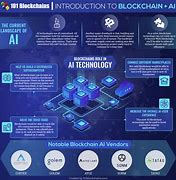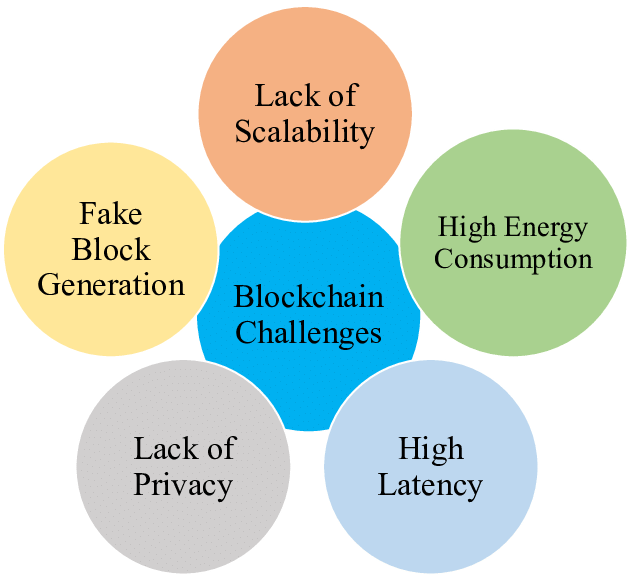AI and Blockchain: Securing Data and Enabling Trust
In today’s digital age, data is often referred to as the new oil. However, with great power comes great responsibility—and the need for secure data management has never been more critical. As technology advances, two of the most transformative forces—Artificial Intelligence (AI) and Blockchain—are coming together to revolutionize how we secure data and build trust in digital interactions.
The digital landscape is evolving at an unprecedented pace, and two of the most transformative technologies at the forefront are Artificial Intelligence (AI) and Blockchain. Together, they have the potential to revolutionize industries by enhancing security, improving data integrity, and fostering trust. In this blog, we’ll explore how these technologies intersect and why their collaboration is crucial for the future.
Understanding AI and Blockchain
What is Artificial Intelligence ?
Artificial Intelligence refers to the simulation of human intelligence in machines programmed to think, learn, and problem-solve. AI systems can analyze vast amounts of data to uncover insights, automate processes, and enhance decision-making. refers to computer systems that mimic human intelligence to perform tasks such as learning, reasoning, and problem-solving. From virtual assistants to predictive analytics, AI is reshaping how businesses operate.
What is Blockchain ?,
on the other hand, is a decentralized digital ledger that records transactions across multiple computers. Its most well-known application is in cryptocurrencies like Bitcoin, but its potential extends far beyond that, providing transparency, immutability, and security.

The Synergy Between AI and Blockchain
While AI excels at processing large volumes of data and generating insights, Blockchain ensures that this data is secure and trustworthy. Here’s how they work together:
1. Enhanced Data Security
Blockchain’s decentralized nature ensures that data is not stored in a single location, making it less vulnerable to hacks. When AI algorithms process data from a blockchain, they can trust its integrity, resulting in more reliable outputs.
Blockchain’s decentralized nature means that data is stored across a network of computers, making it nearly impossible to alter or hack. When AI algorithms access data stored on a blockchain, they can trust that the data has not been tampered with, leading to more reliable outcomes.
2. Improved Data Privacy
Blockchain can empower users to have greater control over their personal data. By using privacy features such as zero-knowledge proofs, individuals can share data without exposing sensitive information. AI can then analyze this data, providing insights while maintaining privacy.
Blockchain can provide privacy features that enable individuals to control their personal data. AI can analyze this data while respecting user privacy, leading to personalized experiences without compromising security.
3. Automating Smart Contracts
Smart contracts are self-executing contracts with the terms written into code. AI can add an intelligence layer to these contracts, enabling them to adapt to new conditions or data inputs. This leads to automated transactions that are secure, efficient, and trustworthy.AI can enhance smart contracts by adding a layer of intelligence, allowing them to adapt and respond to changing conditions automatically, making transactions more efficient and secure.
Use Cases of AI and Blockchain
The combination of AI and Blockchain is already making waves in various sectors:
1. Financial Services
In finance, AI can analyze transaction patterns to detect fraud, while Blockchain ensures that transaction data is secure and transparent. Together, they create a robust system for managing financial transactions.
In finance, AI can analyze transaction data to detect fraudulent activities, while Blockchain ensures that the data remains secure and transparent. This combination significantly enhances fraud detection and risk management.
2. Supply Chain Management
AI can optimize supply chain processes through predictive analytics, while Blockchain provides an immutable record of transactions. This combination enhances traceability, reduces fraud, and improves efficiency.
3. Healthcare
AI can analyze patient data to improve diagnostics and treatment plans, while Blockchain secures patient records and ensures compliance with regulations. This synergy leads to better patient outcomes and trust in healthcare systems.
Challenges and Considerations
While the integration of AI and Blockchain holds immense potential, there are challenges to consider:

- Scalability:
Both technologies need to scale effectively to handle large volumes of data and transactions.
Scalability
- Challenge:
Scalability refers to the ability of a technology to handle increased loads, such as larger volumes of data or transactions, without compromising performance.
-
As organizations generate and consume ever-increasing amounts of data, both AI and Blockchain technologies must be capable of scaling effectively. For AI, this means being able to process vast datasets quickly and accurately. Machine learning models, for instance, require significant computational resources, and as the size of the datasets grows, the demand for processing power and memory increases.
For Blockchain, scalability is a significant challenge due to the nature of its architecture. Each transaction needs to be verified by the network, which can slow down processing times, especially during peak loads. Various solutions have been proposed, such as Layer 2 scaling solutions (e.g., Lightning Network for Bitcoin), sharding, and alternative consensus mechanisms like Proof of Stake, but achieving true scalability while maintaining security and decentralization is still a work in progress.
Organizations need to focus on optimizing their AI algorithms and exploring advanced Blockchain solutions to ensure that both can effectively handle the data demands of tomorrow.
- Interoperability:
Ensuring that different systems can work together seamlessly is crucial for widespread adoption.
- Challenge: Interoperability is the ability of different systems and technologies to work together seamlessly.
- Expansion:
In a landscape where multiple blockchain platforms and AI systems exist, ensuring interoperability is crucial for widespread adoption. If these technologies cannot communicate with each other effectively, organizations may face silos that limit the benefits of their combined use.
For AI, models trained on different platforms or datasets may not integrate well, leading to inconsistent results. Similarly, different Blockchain networks might use various protocols, making it challenging to share data or transact across them.
To address interoperability, industry standards and protocols must be developed that enable different AI models and Blockchain networks to work together. Initiatives like the Interledger Protocol aim to facilitate cross-chain transactions, while frameworks like Hyperledger are working towards enabling diverse Blockchain networks to communicate. Achieving seamless interoperability will unlock the full potential of AI and Blockchain, fostering innovation and efficiency.
Regulation:
Navigating the regulatory landscape will be essential to ensure compliance and build trust with users.
Challenge: Navigating the regulatory landscape is essential to ensure compliance and build trust with users.
Expansion:
The rapid evolution of AI and Blockchain technologies has outpaced regulatory frameworks, leading to uncertainty for organizations looking to adopt these solutions. Regulatory bodies across the globe are still working to understand the implications of these technologies, which can result in inconsistent rules and guidelines.
For AI, issues like data privacy, algorithmic bias, and transparency are critical concerns. Regulations such as the General Data Protection Regulation (GDPR) in Europe impose strict rules on how organizations handle personal data, requiring AI systems to be designed with compliance in mind.
On the Blockchain side, the decentralized nature of the technology complicates regulation. Questions around the classification of cryptocurrencies, anti-money laundering (AML) measures, and consumer protection must be addressed. Governments are beginning to create frameworks to regulate blockchain transactions and initial coin offerings (ICOs), but these rules can vary significantly from one jurisdiction to another.
To foster trust and encourage adoption, organizations must proactively engage with regulatory bodies, advocate for clear guidelines, and ensure that their systems are compliant with existing laws. By doing so, they can build a secure environment for users and stakeholders.
Conclusion
The convergence of AI and Blockchain presents a unique opportunity to enhance data security and enable trust in a digital world. As these technologies continue to evolve, their collaboration will pave the way for innovative solutions across various sectors. Embracing this synergy is not just a trend; it's a necessity for organizations aiming to thrive in the future.
In conclusion, the convergence of AI and blockchain technologies presents a transformative opportunity for securing data and enabling trust across various industries. Blockchain's decentralized and immutable nature enhances data integrity, while AI's analytical capabilities provide insights and automation. Together, they can address critical challenges, such as data privacy, security, and transparency.
The integration of these technologies fosters greater accountability and reduces the risks of fraud and manipulation, which is essential in sectors like finance, healthcare, and supply chains. As we move forward, it will be crucial to navigate regulatory landscapes, address ethical considerations, and ensure interoperability between systems to fully harness their potential.
Ultimately, the synergy between AI and blockchain could redefine how we approach data security and trust, paving the way for more secure, efficient, and transparent systems that benefit individuals and organizations alike.Are you excited about the potential of AI and Blockchain?
Share your thoughts in the comments below!

